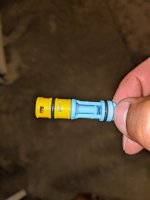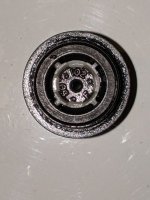invernite
New Member
I have a Fleck 5812SXT that I installed in our home about 3 years ago. I am not at all an expert in water softeners and have unfortunately forgotten many of the details I had learned when selecting the softener a few years ago. We have a 3 CF softener and I feel like our salt usage is very high (at least based on feedback from friends in the area about their usage). I'm putting about 280lbs of salt in the brine tank every 2-3 months. Our water usage averages about 225 gal/day (for a family of 6). This number is from the utility bills and includes water used in regeneration cycles. Our water hardness is 31 gpg and we have 0.25-0.5 ppm iron. When I add salt I typically put about 200 lbs of regular salt and 80 lbs of iron out salt.
I'm hoping someone may either be able to confirm that our salt usage is normal, or provide me with the programming settings to correct the excessive salt usage. Our programming settings are as follows:
df gal
vt 5812
rf dF1b
ct fd
c 72
h 40
rs set to cr
do 28
bw 8
bd 60
rr 6
bf 32
fm t1.2
re off
vr off
I'm not sure what our BLFC is and was unable to locate a sticker or other marking on the valve. Is there another way to find out? I'm not sure if our salt use is primarily impacted by the number of regenerations, length of brine draw, or something else. Or perhaps it's not a programming issue? Please let me know what other information would be useful to provide guidance.
Thank you!
I'm hoping someone may either be able to confirm that our salt usage is normal, or provide me with the programming settings to correct the excessive salt usage. Our programming settings are as follows:
df gal
vt 5812
rf dF1b
ct fd
c 72
h 40
rs set to cr
do 28
bw 8
bd 60
rr 6
bf 32
fm t1.2
re off
vr off
I'm not sure what our BLFC is and was unable to locate a sticker or other marking on the valve. Is there another way to find out? I'm not sure if our salt use is primarily impacted by the number of regenerations, length of brine draw, or something else. Or perhaps it's not a programming issue? Please let me know what other information would be useful to provide guidance.
Thank you!


